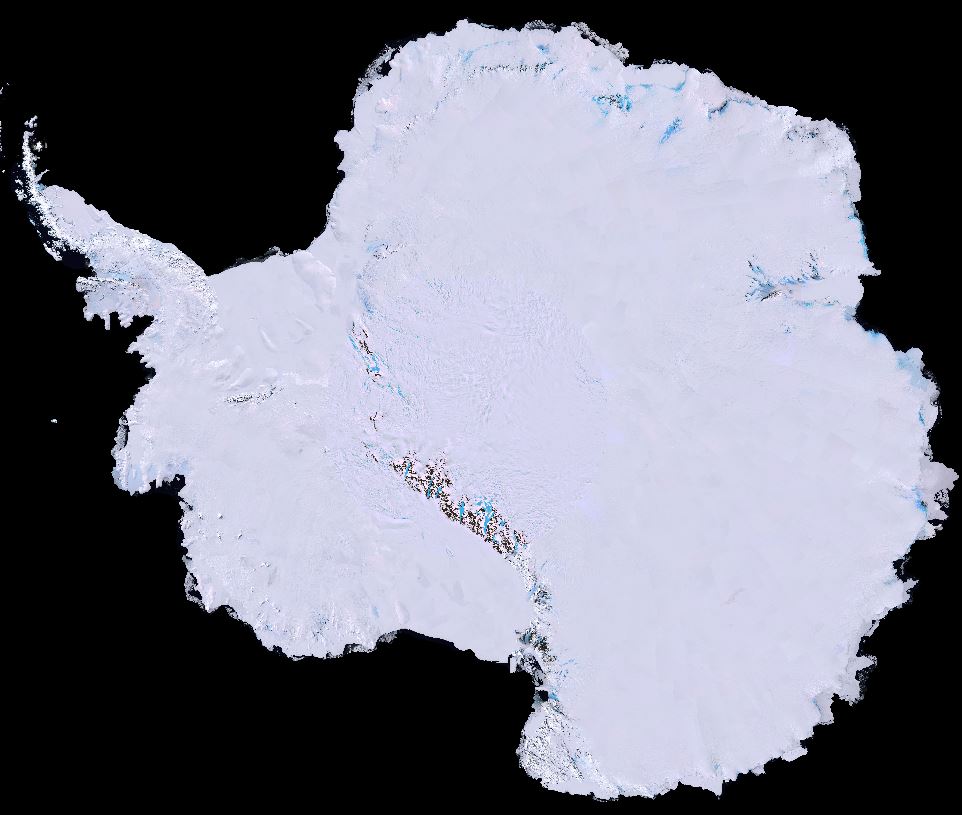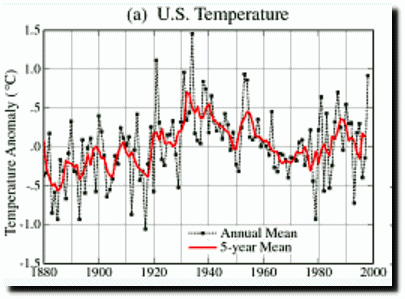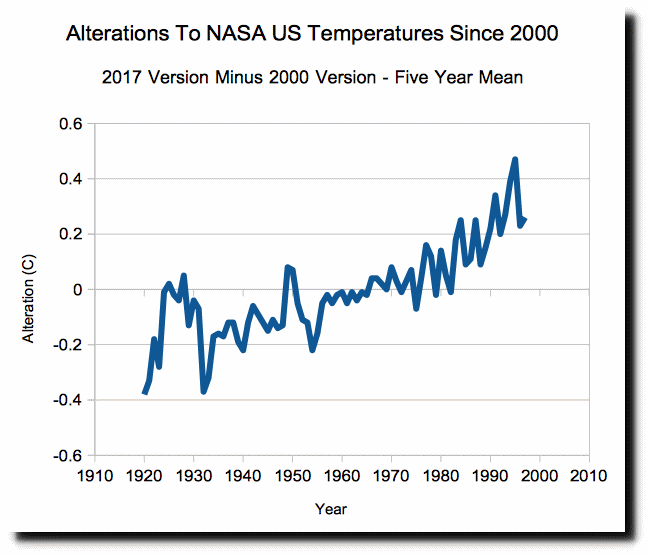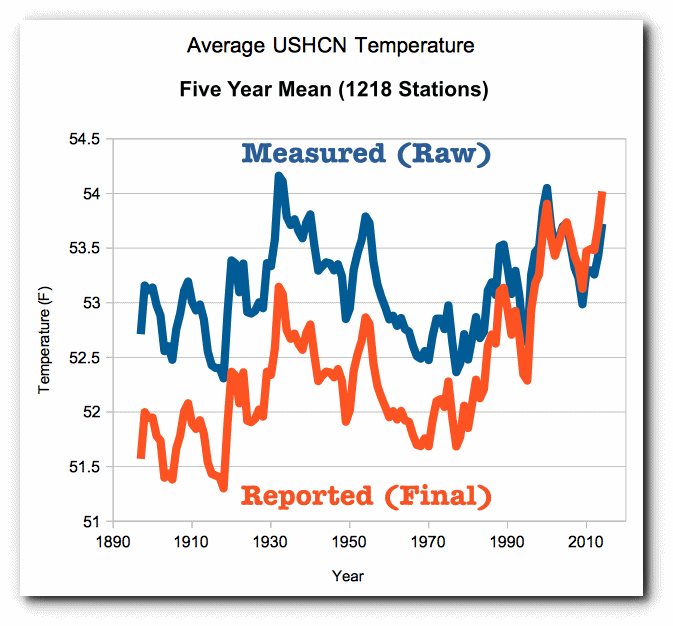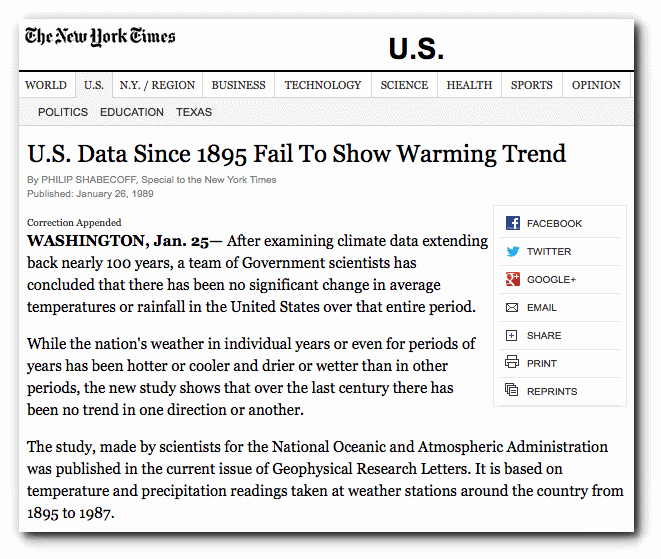Sundance filmgoers warn of ‘global warming’ impacts: ‘It affects our ability to reproduce’ – Warn ‘criminal’ deniers: ‘We are coming for you’
…Trump Orders EPA To Take Down Global Warming Web-Page
…Antarctica Larsen C Ice Shelf Crack Not Related To ‘Climate Change’ – Ice ‘More Stable Than Previously Thought’
By Dr. Sebastian Lüning and Prof Fritz Vahrenholt
(German text translated/edited by P Gosselin)
Image: visibleearth.nasa.gov
A huge crack recently formed through the Antarctic Larsen C ice shelf. The German Tagesspiegel here was fair and did not attribute it to climate change:
A huge iceberg threatens to break away from Antarctica
An iceberg twice the size of Saarland threatens to break off the Larsen-C ice shelf. That’s a rare spectacle. […] ‘The crack is probably 160 kilometers long and 300 to 500 meters deep,’ the project-involved scientist Martin 0′Leary told the German Press Agency on Saturday. A direct connection to climate change cannot be ascertained.”
Read more at Tagesspiegel.
That’s a normal process: Self ice forms, but does not last forever. Time and again cracks form and chunks break off. During the Little Ice Age the shelf ice was more extensive and stable. Before that, during the Medieval Warm Period, the shelf ice melted similarly like today. If one looks at the past 150 years — the global rewarming since the Little Ice Age — then no one wonders that the Antarctic shelf ice retreated 5 meters per day between 1900 and 1930. Over the past fifty years things probably have looked different, as the Antarctic sea water has cooled over the past 50 years. According to Sinclair et al. (2014), the Ross ice shelf has expanded 5%. Apparently the Antarctic sea ice is indeed more stable than previously thought.…
Permanent drought?! ‘How LA went from bone-dry to 216% above average rainfall in 4 months’
…Trump’s Pipeline Approvals Are a Win for the Economy and Environment
…Video: Obnoxious climate alarmist argues with Trump supporter – Gets ejected from airplane
The most important concern of hers was that he doesn’t “believe” climate change. (The word “believe” was stressed and her hands indicated the quotation marks that I have added to the sentence, too.) Do you believe in gravity, Mr Koteskey was asked? Did you know that gravity is just a theory?
You must have heard this demagogic slogan from the climate alarmists many times. Newton’s theory of gravity is approximately accurate (they’re less careful while describing its status) so the theory that the “sky is falling due to CO2” has to be accurate, too. Well, it’s not and the “derivation” isn’t valid.
Do you agree that the “lady” sounded like she has carefully memorized the sentences about the moral high ground, climate, and gravity and just emitted this scene exactly according to a plan?…
Analysis: NASA: If The Trend Is Going The Wrong Way, Simply Change The Data
In 1999, NASA’s James Hansen was troubled that his global warming theory was failing and the US was cooling.
Whither U.S. Climate?
Empirical evidence does not lend much support to the notion that climate is headed precipitately toward more extreme heat and drought. The drought of 1999 covered a smaller area than the 1988 drought, when the Mississippi almost dried up. And 1988 was a temporary inconvenience as compared with repeated droughts during the 1930s “Dust Bowl” that caused an exodus from the prairies, as chronicled in Steinbeck’s “Grapes of Wrath”
in the U.S. there has been little temperature change in the past 50 years, the time of rapidly increasing greenhouse gases — in fact, there was a slight cooling throughout much of the country
NASA GISS: Science Briefs: Whither U.S. Climate?
Troublesome data is no problem for NASA. They simply alter the data to produce the result they want, and then scream that they are being harassed when called out for their fraud.
2000 Version archived by John Daly 2017 Version
In cooperation with NOAA, NASA simply cooled the past to make the post-1930 cooling go away.
NOAA knows perfectly well that the US is not warming.
U.S. Data Since 1895 Fail To Show Warming Trend – NYTimes.com
Study: Climate Change is Making Some Birds Uglier
Guest essay by Eric Worrall
A new study claims climate stress is making some birds lose their mating ornamentation.
Climate change ecology: Hot under the collar
A 34-year study of collared flycatchers demonstrates that males are evolving to be less ornamented in response to rising temperatures.
For male collared flycatchers (Ficedula albicollis; pictured), having a large white patch on your forehead signals that you are a fearsome rival, and an attractive mate. But while large patch size was thought to give males an evolutionary advantage, it seems that climate change is turning this advantage on its head. In this issue of Nature Ecology & Evolution, Evans and Gustafsson report that the collared flycatcher’s forehead patch has declined in size because large patch males have lower fitness as the climate warms.
In many animals, males have ornamental features that are used to attract mates, and to signal to rivals during territorial interactions. While these ‘sexually selected’ ornaments can increase a male’s mating success, they can also impose a variety of costs on their bearers. Ornaments such as bright colouration can increase susceptibility to predators, or they can predispose males to competing for larger territories and more mates, at the expense of providing care for their offspring. As a result, ornamental traits are hypothesized to evolve only when the benefits of being ornamented outweigh the costs.
…
While the authors demonstrate a strong link between climate warming and selection on male ornamentation, they were not able to determine the mechanism behind this link.
…
Certainly, there are good theoretical reasons why climatic changes could influence animal ornamentation across the globe. As Evans and Gustafsson show, some ornaments will decline in response to environmental change, and it is conceivable that some ornaments could disappear altogether. However, there are also reasons to predict that climate change will drive the evolution of new, or exaggerated, ornaments in some species. Just as climate change will lead to winners and losers in terms of species’ abundance and distribution, it seems it may also lead to winners and losers in the global beauty pageant.
Read more: http://www.nature.com/articles/s41559-016-0060…








